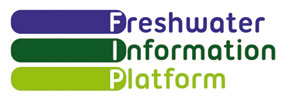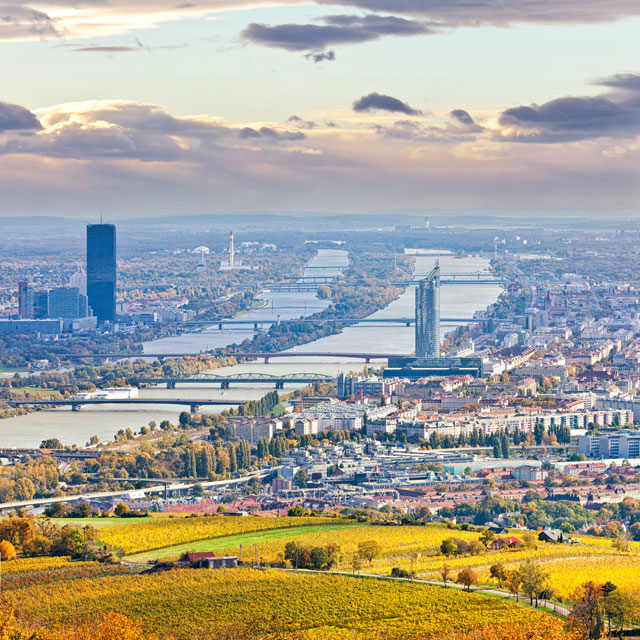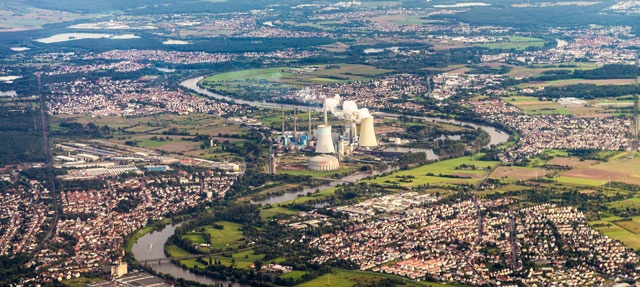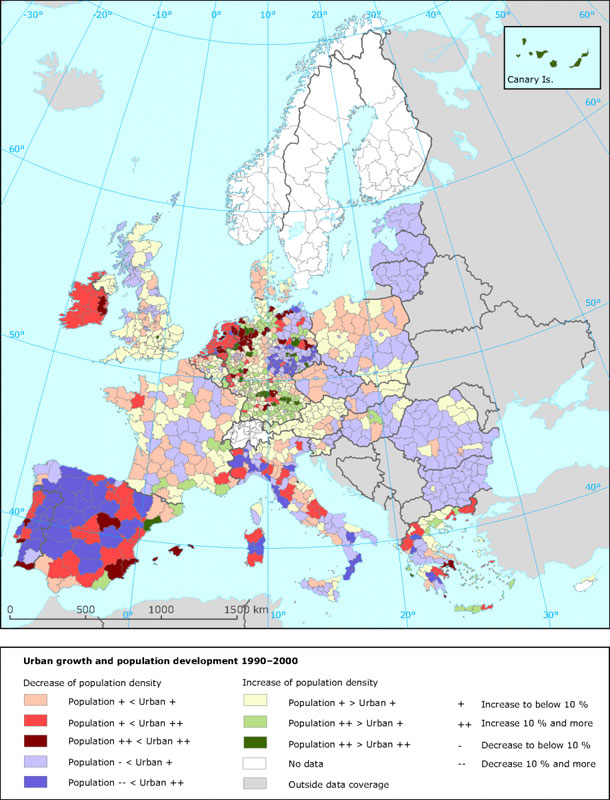Urban Development
Waterways have often been the historical catalysts for urban growth. As a result, the development of towns and cities means significant lengths of many European rivers and their flood-plains have been built on, reshaped, narrowed, or in some cases, buried underground in sewer networks. The impermeable surfaces used in many urban conurbations (such as concrete or asphalt) limit the water storage capacity of river basins, increasing the likelihood and severity of flash flooding, and increase vulnerability to water temperature fluctuations, as riparian vegetation is largely absent.
High population concentrations in urban areas also means that urban development increases both the extraction of freshwater from river basins – for drinking, cooking, bathing and industrial uses – and the diffuse and point input of pollutants, including sewage, bodycare, cleaning and pharmaceutical products, and heavy metals and other leachates from transport, industry and waste disposal sites.
Urban Development pressures
Physical alteration and hydrological alteration: Over the last century, many European watercourses in cities have been sealed in concrete, leading to the loss of habitats and interruption of hydromorphological processes. Urban lakes may be filled in, coastal waterfronts heavily developed, dredged and reclaimed, and rivers even buried underground and linked into sewer networks. Impervious surfaces and sewage collection systems alter water flow regimes in catchments, increasing surface run-off and the frequency and severity of flood occurrences, which can also contribute to increased diffuse pollution as drainage systems are overwhelmed.
Abstraction: Urban populations require significant supplies of clean water, and most significant human settlements across Europe are supplied by a network of human-made reservoirs, often created through the damming of existing rivers and streams, and surface and groundwaters from which water is abstracted. This abstraction can both impact on water body morphology and ecology, and have the potential to significantly reduce water levels and flows.
Point source and diffuse pollution: Urban populations generate a multitude of waste products, such as sewage, chemicals, metals, pharmaceuticals and microplastics, many of which are emitted into the hydrological system, both diffusely and through point sources. Waste disposal sites such as landfills – both active and non-active – can generate wastewater with high concentrations of nutrients, chemicals and harmful microbes produced through decomposition. This range of urban pollutants can cause multiple pressures on nearby water bodies unless appropriately treated.
Geographical distributions and trends
Over 70% of Europe’s population is urban, and this proportion is steadily increasing. Urban development is currently Europe’s fastest growing category of land-use change (EEA 2015). Many European cities rely on far-reaching networks to supply their fresh water, with the largest cities, such as Athens and Paris, often transporting water to their population over 100-200km (EEA 2010). Where some European cities, primarily in southern and Mediterranean regions, face water shortages (e.g. Barcelona in Spain was forced to import water for the city in 2009), others suffer from too much water, in the form of storms and heavy run-off (such as Dresden in Germany, and York in the UK, which are periodically blighted by severe flood events).
Potential for 'water friendly' mitigation
There are a range of strategies for mitigating agricultural pressures on freshwaters. These include efficient manure storage; ‘more crop per drop’ water saving technologies; the use of cover crops in winter on bare soil to reduce erosion and filter pollutants; areas ‘set-aside’ for biodiversity in farmland; riparian buffer strips; the promotion of organic farming; and wetland restoration. Similarly, educational and advisory programmes (such as those facilitated by CAP reforms) may be convened for farmers seeking to reduce their environmental impact.
Cross-compliance is a CAP mechanism which ties direct payments to farmers to compliance with a set of rules based on maintaining agricultural land in good environmental condition. Cross-compliance helps align CAP with the water management goals of the WFD, for example incentivising reductions in the use of sewage sludge on farmland, and the promotion of buffer strips of vegetation at the edge of rivers and lakes. Non-compliance with these rules can lead to reduced CAP payments to farmers. The ongoing implementation and adoption of the Nitrates Directive may also help reduce agricultural diffuse pollution. EU Member States are required to establish ‘nitrate vulnerable zones’ with appropriate management plans on limiting nitrogen manure use (EC 2016).
Further reading
Reports and publications:
EEA (2009a). Ensuring quality of life in Europe's cities and towns - Tackling the environmental challenges driven by European and global change (Download report, 18.6mb)
EEA (2009b). Map urban growth and population development 1990-2000 (Download report, 390kb)
EEA (2010). The European Environment - State and Outlook 2010 - Urban Environment (Download report, 8.5mb)
EEA (2012). European waters - assessment of status and pressures (Download report, 28mb)
EEA (2015). Urban environment - SOER 2015 thematic assessment: Global megatrends - Towards a more urban world (GMT 2) (Download report, 736kb)
Selected Freshwater blogs:
Freshwaterblog (2014). Daylighting Urban Rivers (External website)
Freshwaterblog (2016). Conservation and Restoration of Riparian Zones Under Multiple Pressures (External website)







